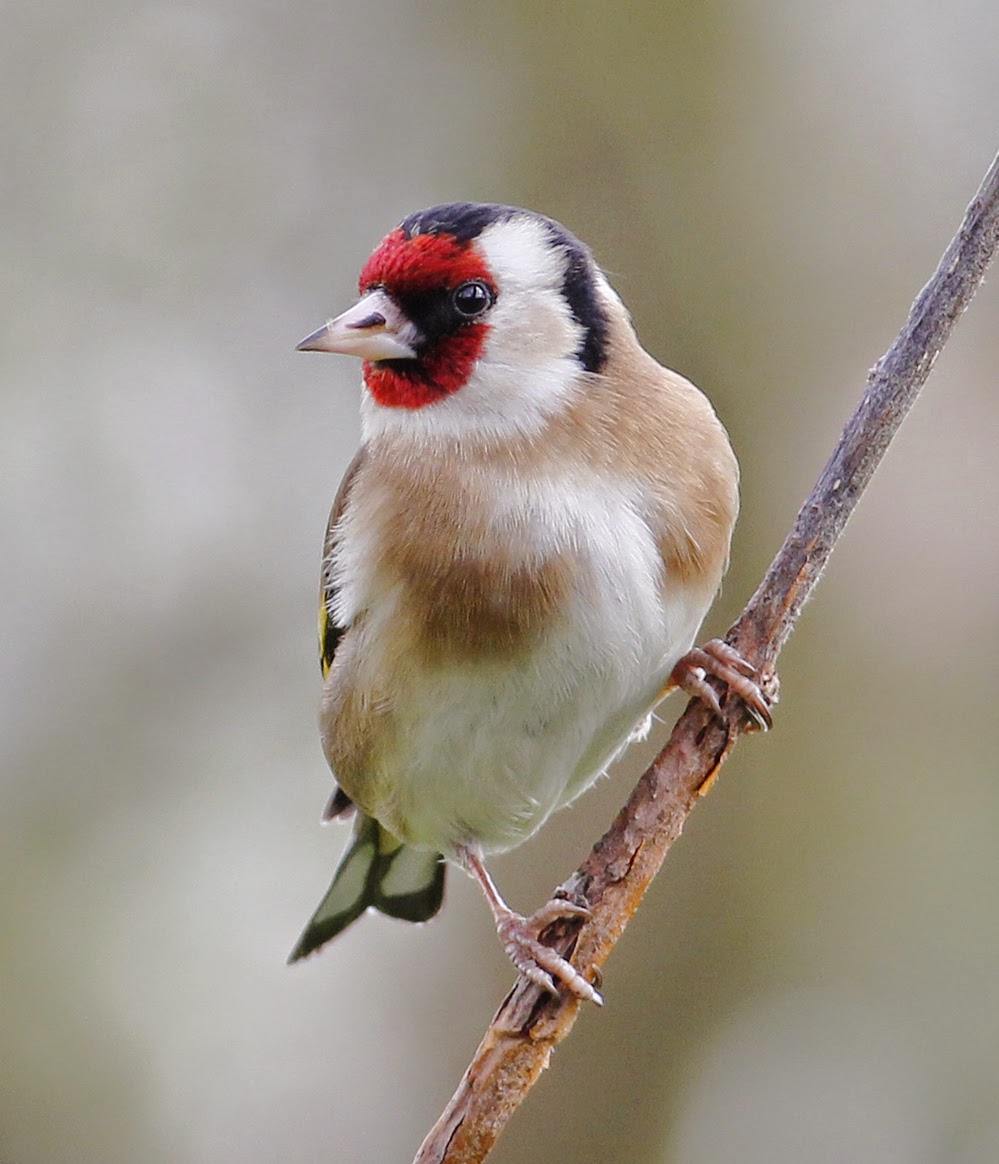This morning dawned grey and breezy so I finished a few chores, rescued the lawn mower from hibernation then cranked it up for the first cut of grass in 2015. Things are warming up for a day or two, then next week there’s more cold weather to let the lawn go back to sleep. There’s nothing quite like the delightful and mysterious British climate to keep a birder or a gardener on their toes.
By midday there was sun and a spot of birding beckoned. While a.m. birding is mostly more productive than p.m., I set off for a few gentle hours at Pilling.
The fields at Fluke Hall Lane seemed strangely empty with just 45 or so Lapwing including some paired birds and tumbling display. The hundreds of Golden Plovers of Wednesday had mostly gone with less than 30 remaining and even the Redshanks and Oystercatchers in single figures. A single Snipe rose from the wet stubble, calling as it flew out to the marsh.
Then I spotted the possible cause of the almost deserted meadows, a tiny, bright-as-a-button Merlin sat motionless, quite high and partly hidden in a tree which overlooks the marsh. The falcon let me take a few shots from the car window before it shot away across the fields in pursuit of a meal, scattering a Skylark or two in the process. Merlins have been pretty scarce this winter with this one almost certainly a migrant heading north for the coming Spring.
Merlin
Most birds are an anti-climax after catching sight of a magical Merlin, but I left the car behind and set off to walk the lane and shore in search of more birds. A silent Buzzard appeared overhead and flew towards Lane Ends but I know both birds are back on territory now. Likewise the Kestrels; the female hovered above the edge of the wood and then further along the lane a male lifted from the grass and carried a vole to a more convenient dining table.
Buzzard
Through the wood a Great-spotted Woodpecker, 2 Song Thrush, a pair of Long-tailed Tit, 4 Tree Sparrows and an all too brief Sparrowhawk. The Twite flock of Wednesday was no longer in the car park field, just 190 Pink-footed Goose, 8 Curlew, 2 Pied Wagtail and a pair of Oystercatcher.
Long-tailed Tit
More Pink-footed Geese were crammed into the fields at Braides Farm, the suspicious flock not daring to come closer than 200 yards from the road. Maybe the recent cold northerly winds have held back their migration because their numbers today were something like 10/12,000, a good number for March when by now many should be on their way to Iceland. The only interloper spotted was a single Barnacle Goose.
Also there - a single Buzzard, 2 Little Egret, 14 Linnet and 7+ Skylark.
It’s not an awful lot to show for an afternoon in the sun but a Merlin sure makes any day a special one. If only that Merlin could work its magic on the weather to make Winter vanish and Spring appear?
Linking today to Eileen's Saturday Blog.
Linking today to Eileen's Saturday Blog.




































































